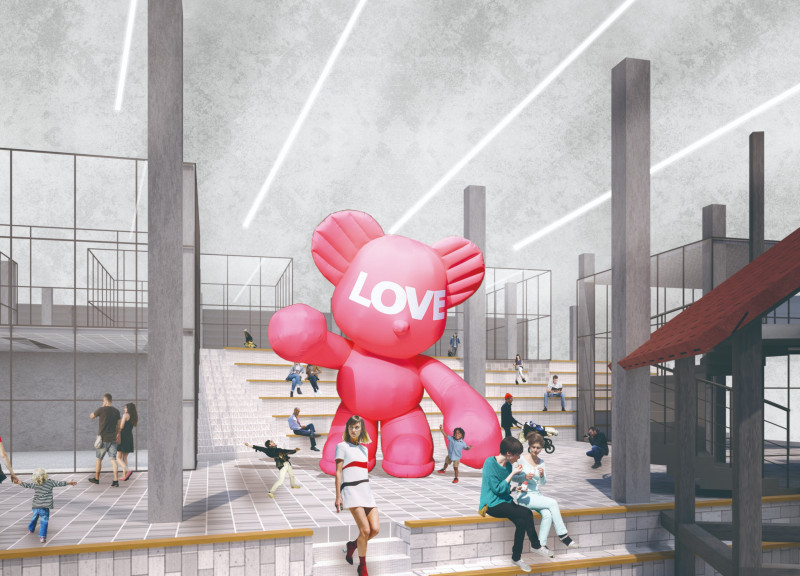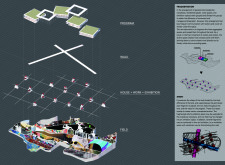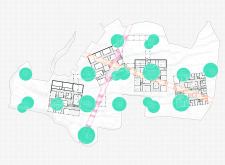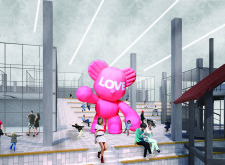5 key facts about this project
The design is set in a rural landscape surrounded by farmland. It includes spaces for living, creating art, and learning. The overall concept focuses on fostering interaction among artists, residents, and visitors. Rather than mere observation, it encourages active participation in the artistic process. The arrangement aims to promote sustainability by creating environments that support communication and collaboration.
Park-Architecture
The project introduces the idea of park-architecture. In this concept, various functional spaces, such as artist studios, exhibition areas, and market stalls, are spread out across the site. This layout resembles an extensive exhibition hall that invites exploration. Users are encouraged to move through the landscape freely. This design choice enhances interactions with both the art and the surrounding environment.
Program Fragmentation
A key feature is the fragmentation of different programs. Instead of grouping spaces for efficiency, the design disperses them throughout the area. This approach allows for greater flexibility in movement and increases opportunities for meaningful interactions between artists and visitors. The layout encourages organic exchanges, enriching the community experience and fostering direct communication and collaboration.
Responsive Spaces
The design responds to the natural contours of the land. A grid system organizes the spaces according to the topography, allowing each element to fit harmoniously within the environment. Exhibition areas can adapt depending on the needs of different events. This flexibility creates an environment where programming can evolve, facilitating community engagement.
Each space within the complex serves as a platform for interaction. Visitors are invited to explore both the artistic offerings and the natural setting. Design elements enhance accessibility and encourage spontaneous interactions. The connections between indoor and outdoor spaces are carefully considered, allowing for a fluid experience that supports creativity and exploration.






















































